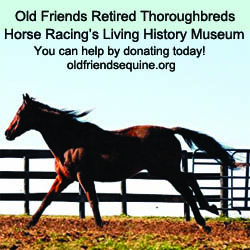Retire & Rehome
Whichever way we ride or however we are associated with horses, we can all agree that horse welfare and rescue is extremely important. Learn about these caring places in our Rehome section, where money and time can be donated to help horses find, or remain, in their forever home.
Many charity events help fund the good work of equine rescue organizations. Parties and auctions to benefit rescue are included in the Calendar of Events for Retire & Rehome.
Have an old friend to retire? Find a place where your horse can live the life of leisure in our Retirement section.
Do we need to add an event or rescue? Please use the useful feedback link and let us know!
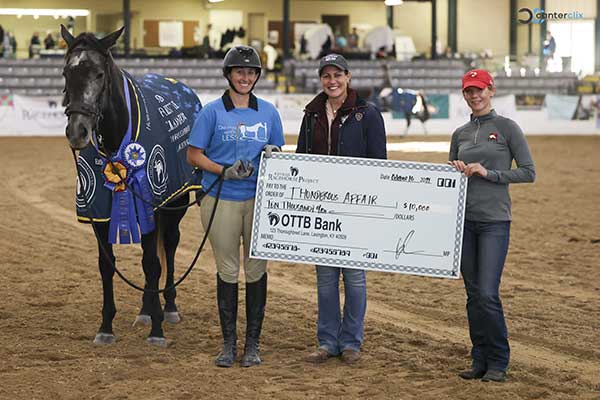
The 2021 Thoroughbred Makeover and National Symposium, presented by Thoroughbred Charities of America, was an historic event with competition years running for both 2020-eligible and 2021-eligible horses, due to the postponement of the 2020 event. Competition years competed separately across three days of preliminary competition, vying for a total of over $100,000 in prize money, with each competition year crowning its own Thoroughbred Makeover Champion.
Thunderous Affair, trained by Lindsey Partridge, was selected by the panel of judges of the Thoroughbred Makeover and National Symposium, presented by Thoroughbred Charities of America, as the 2020 Thoroughbred Makeover Champion, sponsored by Churchill Downs.
The 2017 16.2 hand gray/roan mare was bred in Kentucky by Jim Williams. She never made a start, but did train to race. By Liaison out of the Thunder Gulch mare Thunder Fan, Thunderous Affair was placed through CANTER Michigan.
Lindsey Partridge, a professional based in Pontypool, Ontario, is no stranger to the Thoroughbred Makeover — she won the overall title back in 2015 with Soar — but this particular journey has not been without its challenges.
“She didn’t trust me in the beginning,” recalled an emotional Partridge. “I really had to slow down and just go to events, and just not make it about competing. Just the fact that she was so calm and relaxed here and able to trust me to do everything — gosh, I’m going to start crying!”
Partridge, who has made a name for herself with her unique brand of horsemanship and crowd-pleasing freestyle routines, trained Thunderous Affair to not one but two discipline championships — Freestyle, in which the pair played with Partridge’s signature big blue tarp and other props, and Competitive Trail, in which Thunderous Affair’s easygoing demeanor impressed judges and spectators alike.
“It’s all about putting that relationship first,” Partridge described, reflecting on her past Makeover performances and her road to success. “I’ve done ranch and field hunter and trail and freestyle, but it all comes back to that partnership first.”
2020 Thoroughbred Makeover Discipline Champions (in order of go):
- Eventing, sponsored by Tipperary Equestrian: Legend’s Hope, trained by Jazz Napravnik
- Show Jumper, sponsored by Excel Equine: Canton Comet, trained by Samantha Fawcett
- Show Hunter, sponsored by Beyond the Wire: Still Dreaming, trained by Charles Hairfield
- Field Hunter, sponsored by Masters of Foxhounds Association: Zapper, trained by Cameron Sadler
- Dressage, sponsored by PTHA’s Turning For Home: Elbow Room, trained by Helen Pianca
- Polo, sponsored by United States Polo Association: That’s My Bertie, trained by Willowbrook Polo Team
- Freestyle, sponsored by New Start: Thunderous Affair, trained by Lindsey Partridge
- Barrel Racing, sponsored by SmartPak: Czraina Maria, trained by Jessica Frederick
- Competitive Trail, sponsored by Godolphin: Thunderous Affair, trained by Lindsey Partridge
- Ranch Work, sponsored by MidAtlantic Horse Rescue: Aussie Prayer, trained by Raechel Ramsey
Read more: Thunderous Affair is 2020 Thoroughbred Makeover Champion
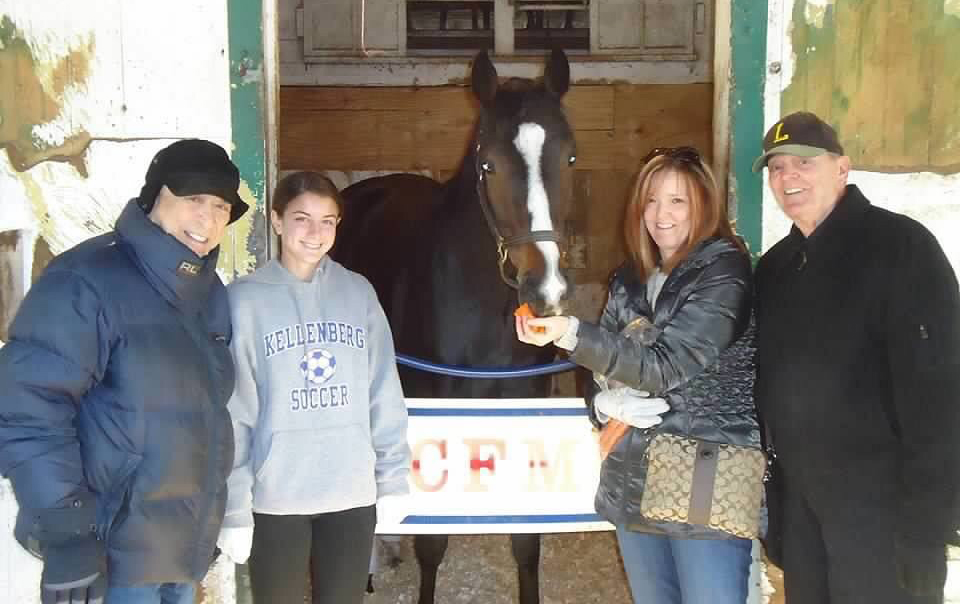
by the EIE Editorial Team
It was a great day for Eye Luv Lulu on December 4th at Aqueduct Racetrack. Lulu, a stakes winner and also graded stakes placed gelding, was claimed by his breeders, the Newman family, and retired to be sent to the place where he was foaled. Lulu was followed closely on social media and celebrated when the 9 year old veteran found a soft landing.
His impressive career of 61 starts included 11 wins and finished 16 times for place and 10 times for show – earning an impressive $931,174.
Equine Info Exchange learned from Adam Newman that his father, Donald Newman who passed away in December of 2014, was involved in the horse racing business for 45 years ago in the mid 70’s. “We grew up in Queens, NY, and horses were foreign to us. But my father got involved at first by claiming horses and then breeding.
We had modest stock at first but his involvement grew over time. He got out of claiming and would buy horses privately and breed at a higher level – which mirrored the growth and evolution of the New York breeding program,” says Adam Newman. “It was really an achievement for our family as small breeders to have bred a horse which earned almost a million dollars.”
Fast forward to Eye Luv Lulu, the horse was named after his dog Lulu. The horse is also as sweet as his canine namesake. The New York Bred didn’t have a fancy pedigree. He was by Pollard’s Vision out of Honkey Tonk Trick by Phone Trick and was the first foal of the mare his father purchased. The mare won a race but was injured and retired. She wasn’t big but always tried - a heart that Lulu clearly inherited.
Read more: Eye Luv Lulu – Home Again After an Illustrious Career
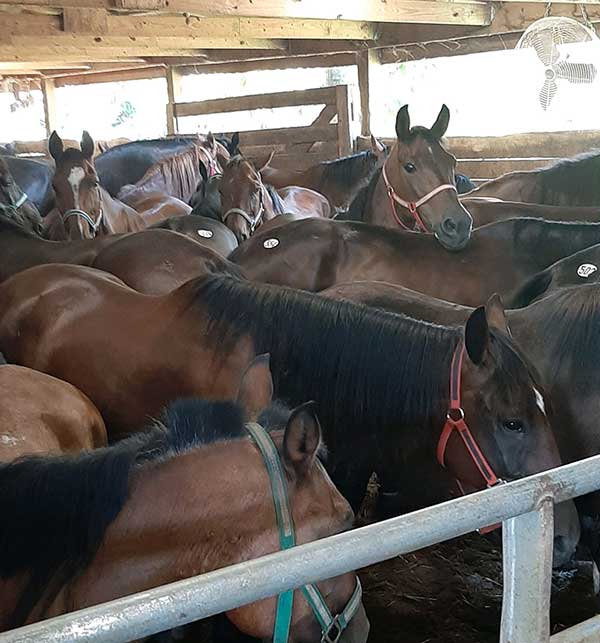
In times of economic strife, it's not hard to find them – ads on Craigslist or posts on Facebook (despite its ban on the sale of animals) advertising horses “free to a good home.” Sometimes they're just “free.” Of course, for every horse that isn't publicly advertised in search of a new placement, there are those who are given away or sold for low prices to acquaintances of acquaintances.
For one small breeder in Central Kentucky who asked to remain anonymous, it was something of a relief when a longtime friend offered to take 23-year-old pensioned broodmare Procession. The mare was on the farm, having been retired from breeding a couple of seasons before. The friend was in a pinch, having lost a mare she had needed to fill out a stallion season. It turned out Procession was no longer fertile, so she continued living the retired life with slightly different scenery.
One day, local horseman Tommy Browning came to Procession's new home to collect one of his nurse mares, who he had leased out as an artificially-induced lactating mare (meaning there was no foal produced to stimulate milk flow). Browning took an interest in Procession. He was looking for more mares to help him meet the demand for foal-free nurse mares for next season, he said. Both breeders had had nurse mares from Browning before, and those mares seemed to arrive in good physical condition, so neither had serious concerns about giving him Procession.
Browning also picked up 20-year-old mare Tack Room as a freebie from another farm after telling her owner the same story.
Browning has been charged with animal cruelty twice in the state of Kentucky, though both times charges were dropped. One charge stemmed from an incident in January 2019 in which Browning's trailer broke down along I-75 and Browning allegedly left a mare tied inside with no food or water from mid-afternoon until the next icy-cold morning when a policeman was called to check on the trailer.
In 2014, concerned neighbors took to social media to accuse Browning of starving mares kept on a dry lot in the middle of spring. Browning told the Georgetown News-Graphic he was keeping the mares off grass to avoid exposing them to tall fescue, which can be infected with a fungus that can be harmful to lactating mares. Browning said he fed the mares hay and had every financial incentive to keep them in the best of health.
In 2011, Browning pleaded guilty on six misdemeanor charges of failing to dispose of equine carcasses on his property in Stamping Ground, Ky.
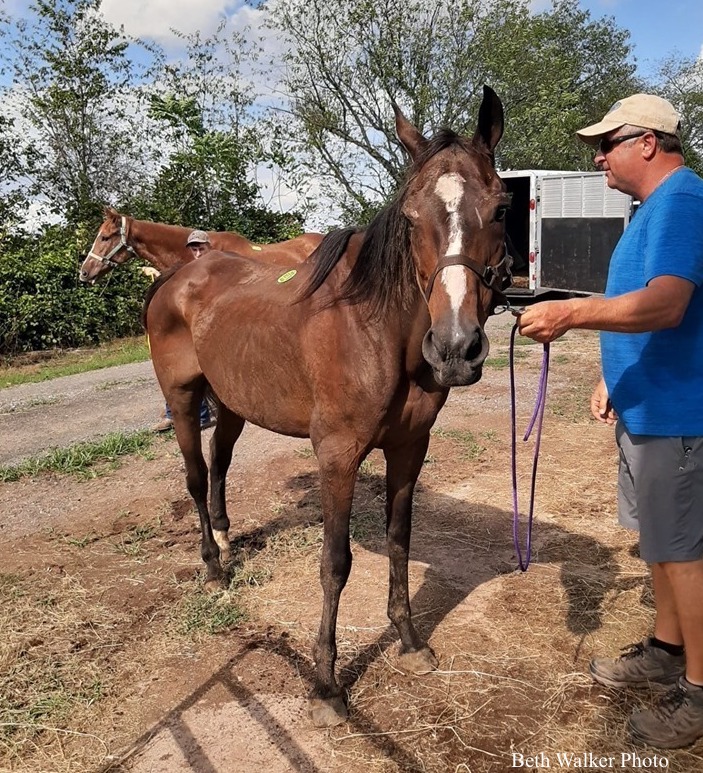
One month after Procession left her owner's farm, she and Tack Room would be discovered in a pen owned by a Pennsylvania-based contractor for a Canadian horse slaughter facility. They were part of a group of seven Thoroughbred mares who all arrived at about the same time.
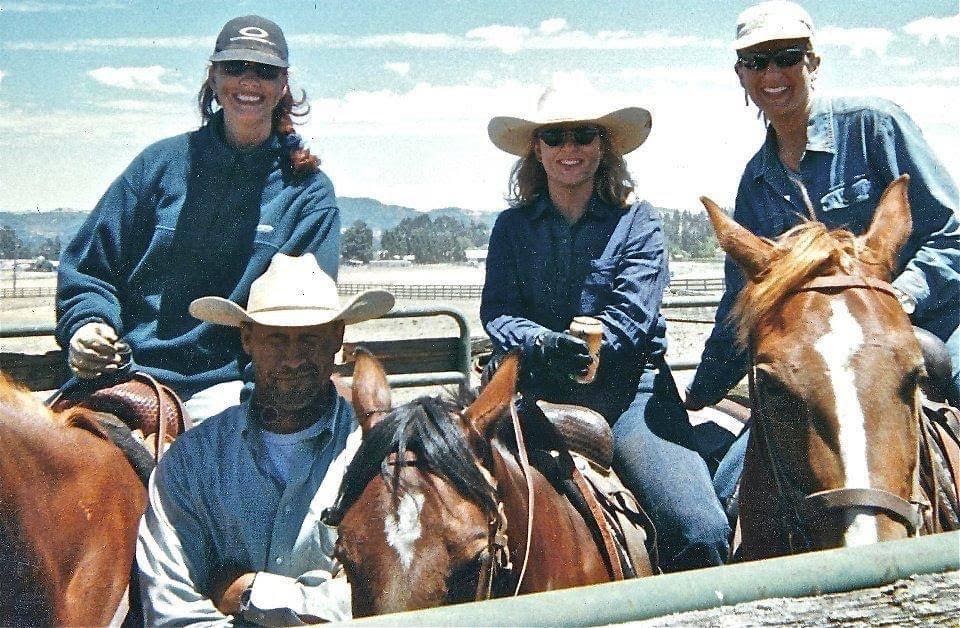
by Dani Scheider
Before she could walk, Lori Johnston was on the back of a horse. “My mom would throw me up on the saddle with her while she rode,” she told us.
Before hunter/jumpers, Johnston began her riding career in the Western world, “I have shown cutting horses and did ranch work,” she shared. Johnston primarily had Quarter Horses until she switched to the jumpers thirteen years ago.
“I started learning how to jump on Wyatt, a retired reined cow horse,” Johnston said. Wyatt, now 21-years-old, taught Johnston to jump before becoming a lesson horse with Alanna Snowden at Gracelynd Hill in Santa Barbara. Wyatt helped teach several students for six years at Gracelynd Hill.
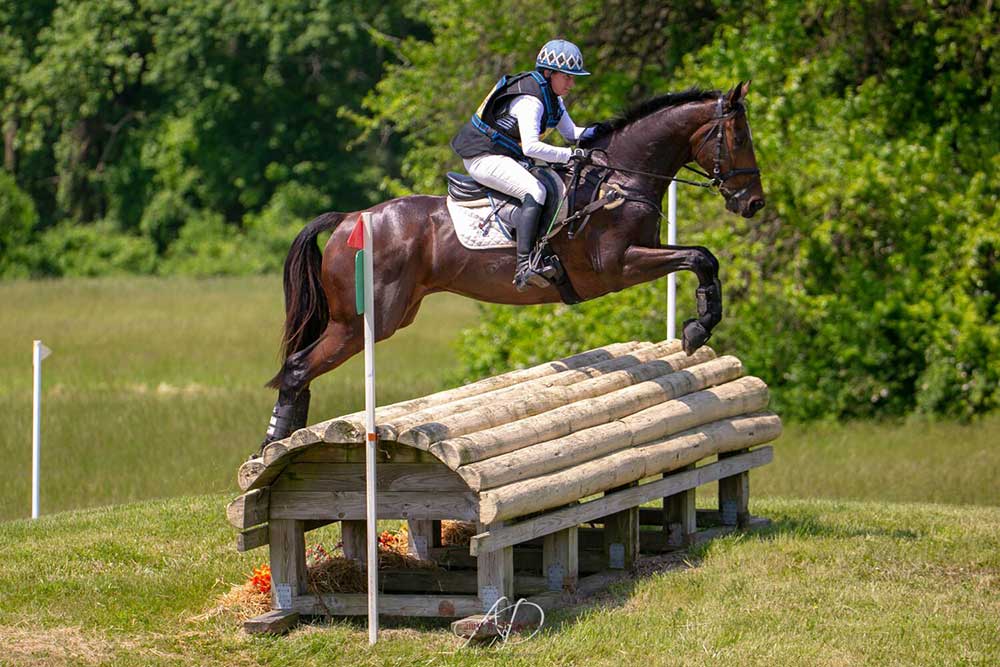
While the in-person horse shopping and adoption experience at the Thoroughbred Makeover and National Symposium may no longer be possible this year with the postponement of the event to 2021, the Retired Racehorse Project (RRP), thanks to a generous grant from the ASPCA, will continue to produce the Makeover Marketplace and promote transitioned Thoroughbreds as premier sport horse prospects online.
Expected to feature dozens of restarted Thoroughbreds, the ASPCA Makeover Marketplace catalog will once again be offered in print as well as digitally. Sign-ups are now open to receive the catalog, which will be printed in the Fall 2020 issue of Off-Track Thoroughbred Magazine, the RRP’s award-winning quarterly publication. The catalog will be printed in color and feature each horse’s Jockey Club name and basic details, price or adoption fee, home location, description and photo, as well as trainer contact information. Each advertisement will also include a QR code that will direct smartphone users to the horse’s full online listing, which may include additional information and video.
“The ASPCA Makeover Marketplace has become one of the country’s premier horse shopping and adoption opportunities for equestrians looking for well-started sport horse prospects,” said Jen Roytz, Executive Director of the RRP. “Traditionally, horse shopping includes extensive travel, often going to multiple farms in different states in order to consider horses, but changing mandates and travel restrictions during the pandemic are limiting those opportunities. The Marketplace lets you browse from the comfort of your couch and peruse dozens of photos, videos and descriptions of equine athletes for adoption or sale who have had the proper care, nutrition and training to make a successful transition to a competitive or recreational career after racing.”
Read more: Retired Racehorse Project’s ASPCA Makeover Marketplace Transitions to Virtual Event
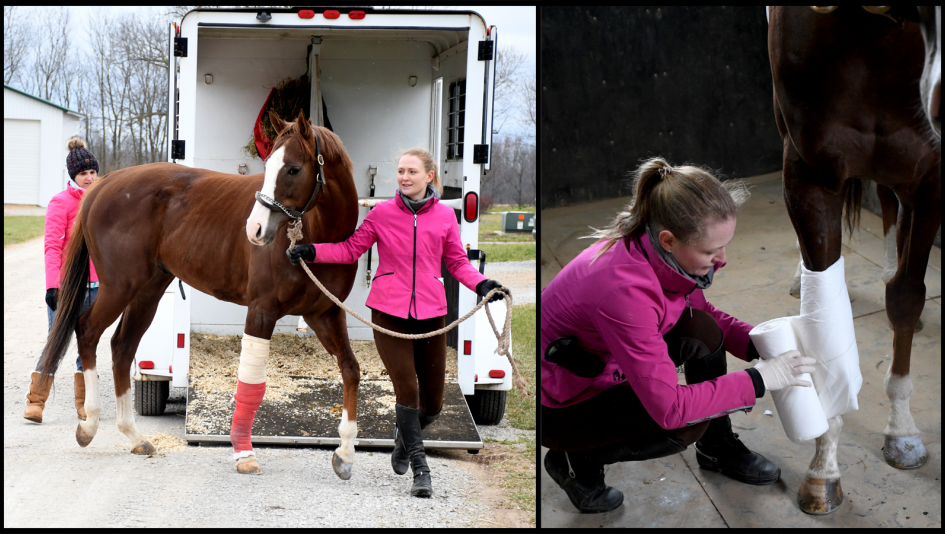
by Melissa Bauer-Herzog
Are you thinking about buying an Off-track Thoroughbred (OTTB) but concerned after learning about various racetrack injuries? While hearing about many of the injuries can be scary, most won’t restrict your mount from helping you achieve your goals.
In order to shed some light on how even a severe injury can be rehabilitated to allow a former racehorse to succeed in a new career, we’ve teamed up with New Vocations to follow a horse from rehabilitation intake to adoption.
Over the coming months, we’ll see what a normal rehabilitation process looks like for a horse recovering from a surgery to remove a bone chip and screw.
But first … a little background on New Vocations.
Read more: The Rehabilitation Process at New Vocations: Meet London House
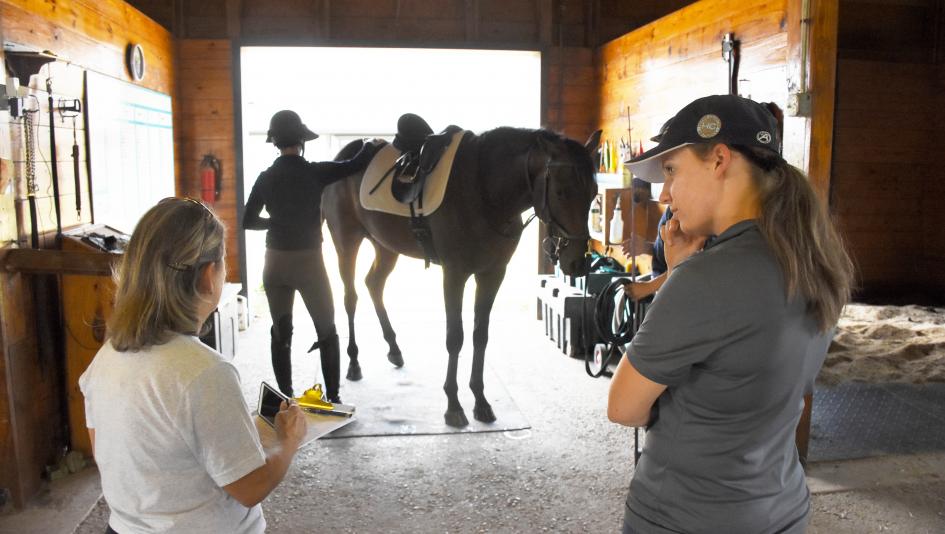
by Melissa Bauer-Herzog
When applying for Thoroughbred Aftercare Alliance (TAA) accreditation, it isn’t as easy as just filling out an application and receiving money. Each operation applying for accreditation must go through an inspection of every property it uses with many accredited organizations admitting the process isn’t a walk in the park but that it is needed.
“I think it’s crucial. It’s very, very hard,” said Susanna Thomas of the TAA-accredited Maker’s Mark Secretariat Center. “They are very thorough, and their process is well thought out, well executed; that makes it very hard. I welcome that and I applaud that because people donate their precious dollars and they need to know that if an organization is TAA accredited that their dollars are being well spent. Let me tell you, the TAA makes sure that you spend your dollars well, they are very good at that and they are really tough. It means something to be TAA accredited and I am so grateful for that.”
Read more: Thoroughbred Aftercare Alliance Accreditation an Involved Process
- Thoroughbred Aftercare Alliance Continues to Expand Reach
- Twelve Things to Remember When Bringing Home an OTTB
- Aftercare Should Not Be An Afterthought: Solutions For The Future
- Emptying The Ocean With A Teaspoon: The Challenges Of Aftercare
- A Decade In, How Are We Doing With Thoroughbred Aftercare?
- On Aftercare: Jordan Uses Hall of Fame Cutting Horse Technique to Better Transition Thoroughbreds
- PETA is a Bully
- Ten Lessons Learned From 2019 Thoroughbred Makeover
- Rosie Napravnik’s Trio of Ex-Racehorses Excel at Thoroughbred Makeover
- Australian Firefighters Horse Calendar Photoshoot (2:56)







